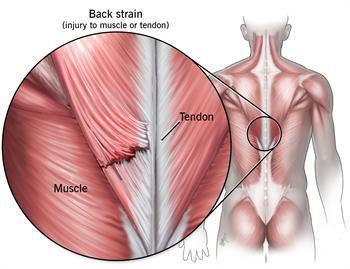
Muscle Strains
Overview of Muscle Strains
Muscle strains, often referred to as ‘pulled muscles,’ are common injuries resulting from overstretching or overuse of a muscle or its associated tendons. They can occur in any muscle, but they’re most common in the lower back, neck, shoulder, and hamstring.
Types of Muscle Strains
Muscle strains can be classified into three grades based on their severity:
1. Grade I: A mild or minor strain where only a few muscle fibers are stretched or torn.
2. Grade II: A moderate strain with a greater number of fibers damaged, but the muscle isn’t completely ruptured.
3. Grade III: A severe strain where the muscle is completely torn or ruptured. This is a serious injury that needs immediate medical attention.
Causes of Muscle Strains
The main causes of muscle strains include:
– Overuse of a muscle
- Improper or inadequate warming up before physical activity
– Poor conditioning
- Sudden acceleration or deceleration
– Repetitive heavy lifting
Symptoms of Muscle Strains
Common symptoms include:
- Pain and tenderness in the muscle
– Swelling
– Limited movement
– Muscle weakness
– A ‘knotted-up’ feeling
– Bruising or discoloration
– Muscle spasms
In severe strains (Grade III), an individual may feel a popping sensation when the injury occurs.
Diagnosis of Muscle Strains
A muscle strain is typically diagnosed through a medical history review and physical examination. Your healthcare provider may check for tenderness, swelling, bruising, and muscle weakness. In some cases, an MRI or ultrasound might be required to confirm the grade of the strain.
Treatment Options for Muscle Strains
Treatment of muscle strains depends on their severity:
– Rest: For minor strains, rest is usually sufficient for healing.
– Ice application: Ice packs can reduce swelling and accelerate recovery.
– Compression: Wrapping the injured muscle can help minimize swelling.
– Elevation: Lifting the injured area can reduce blood flow and minimize swelling.
– OTC pain relievers: Over-the-counter medication can alleviate pain.
For moderate to severe strains, physical therapy might be recommended to regain movement and strength in the muscle. In extreme cases, surgery may be required.
Living With Muscle Strains
It’s important to manage muscle strains to prevent re-injury and facilitate healing:
– Implement gentle stretching exercises as part of daily routine.
- Gradually build up physical activity as the muscle heals.
– Maintain good conditioning and fitness levels to prevent future strains.
– Drink plenty of water for optimal muscle health.
- Eat a balanced diet rich in protein for muscle repair and growth
When to Seek Help
While minor muscle strains can usually be managed at home, certain circumstances call for immediate medical attention:
– Severe pain or swelling
– Inability to move the muscle
– Visible deformities such as a bulge or indentation
– Muscle strain following a high-impact injury
– Lack of improvement despite home remedies
So, while a muscle strain is common and typically manageable, don’t disregard the severity of a potentially serious tear. Listen to your body and seek medical advice when needed. Remember, it’s better to be safe and ensure you’re taking appropriate steps for recovery.
